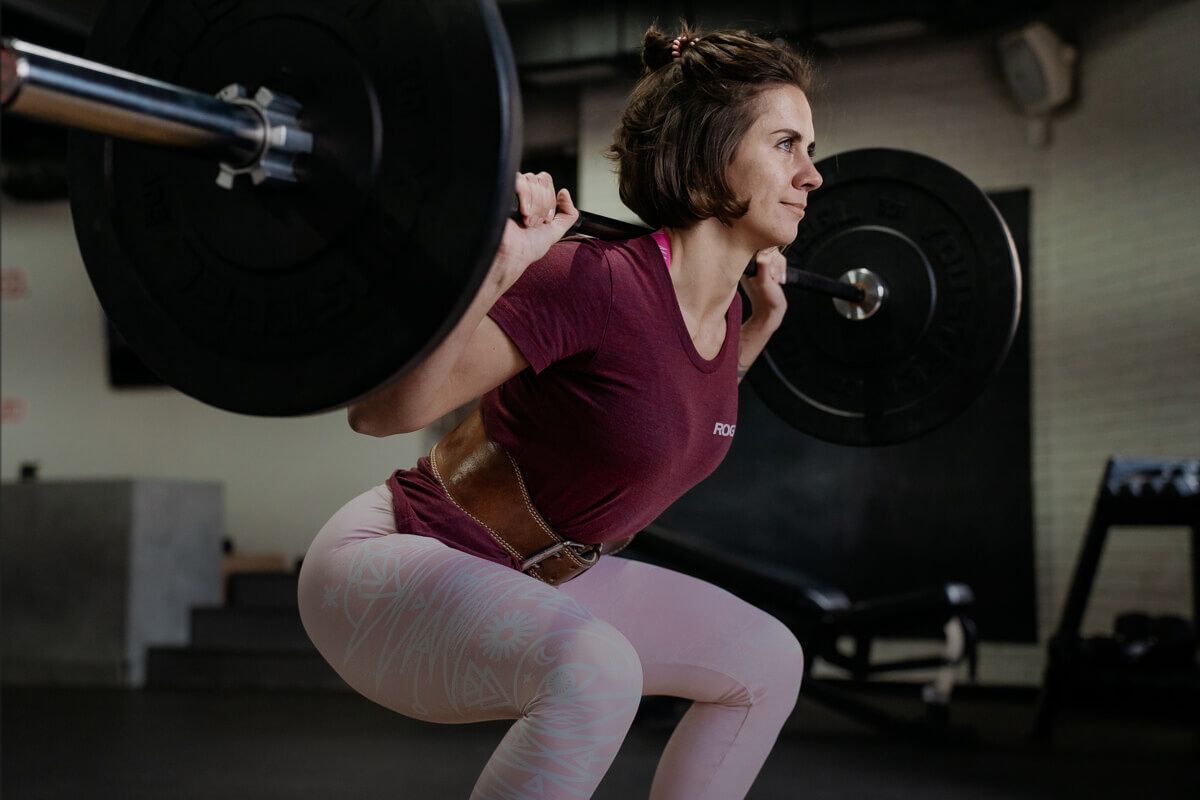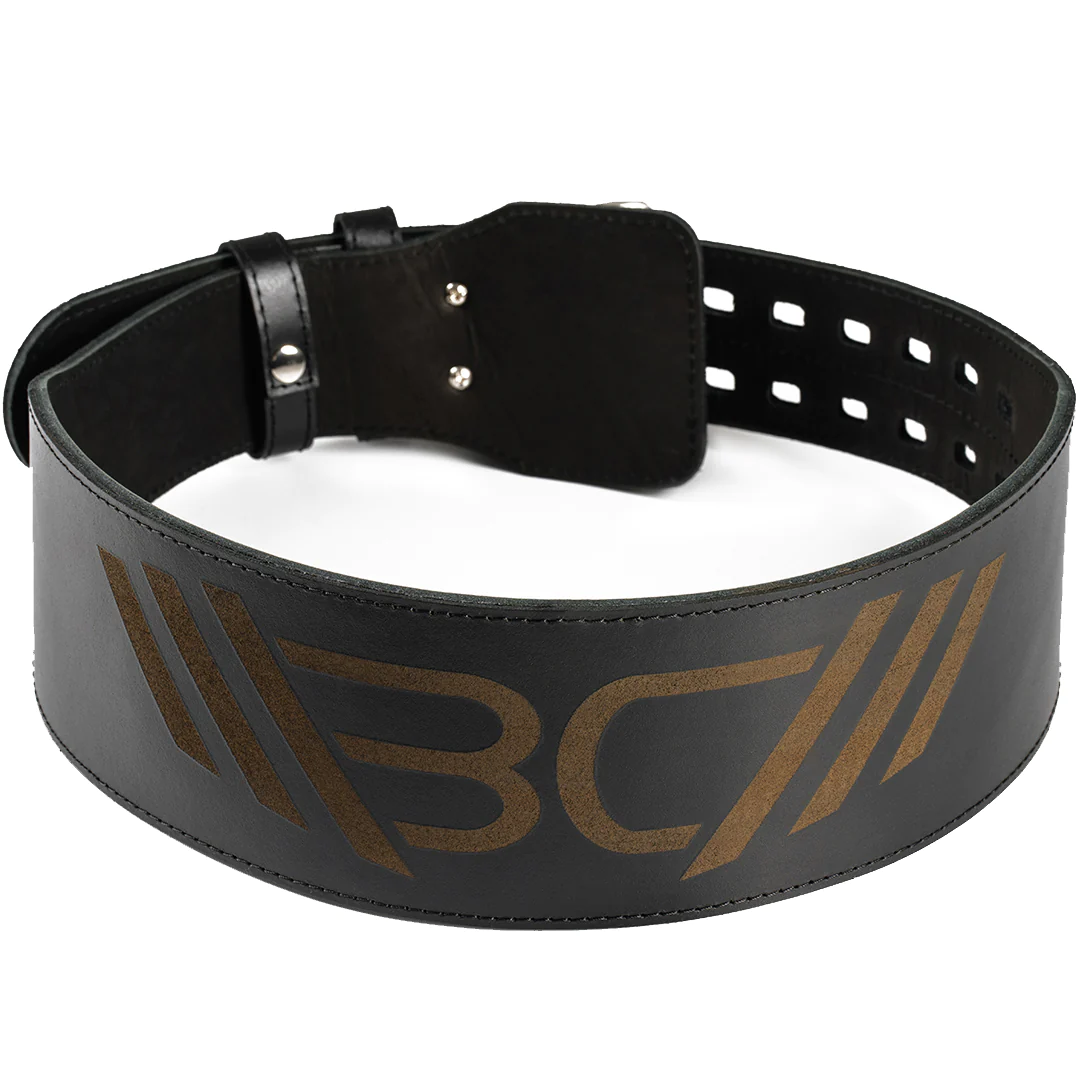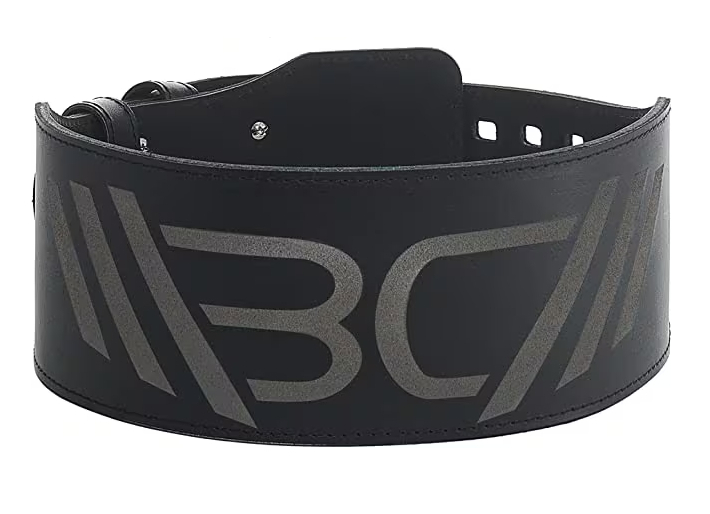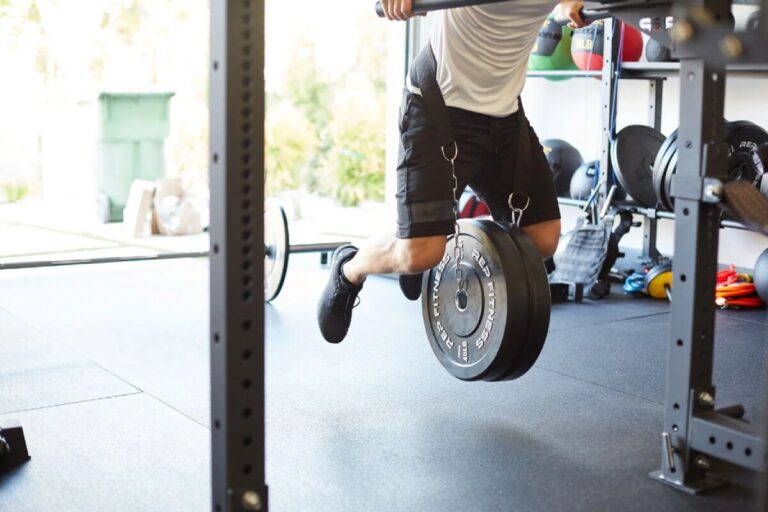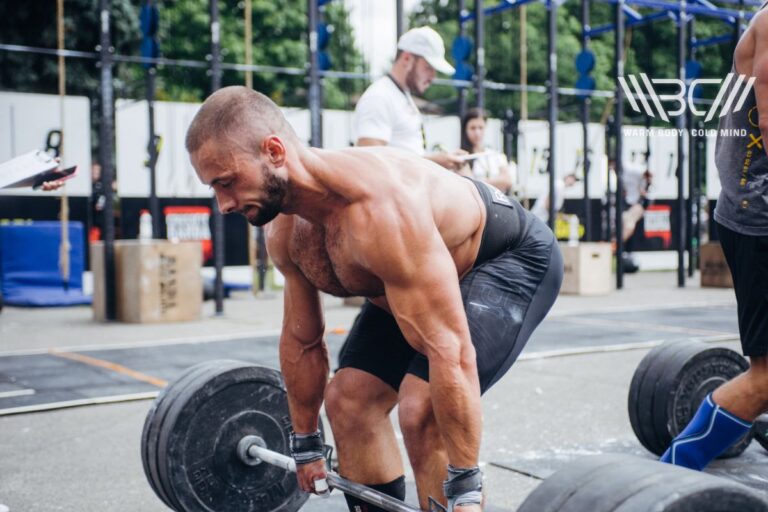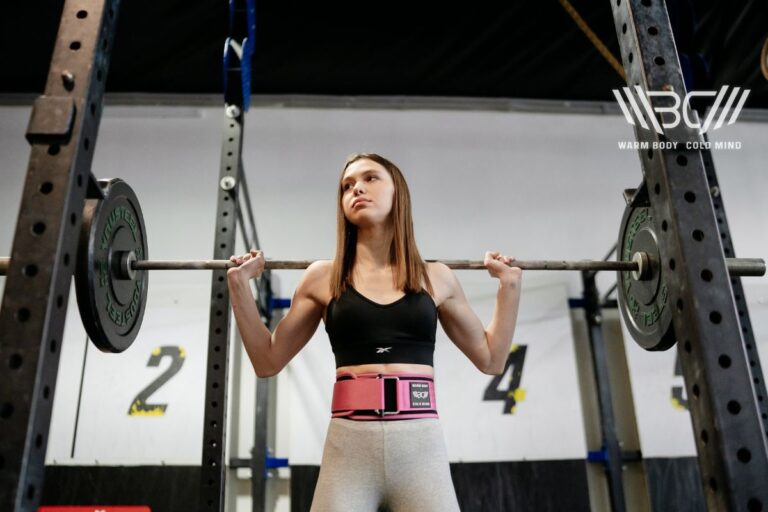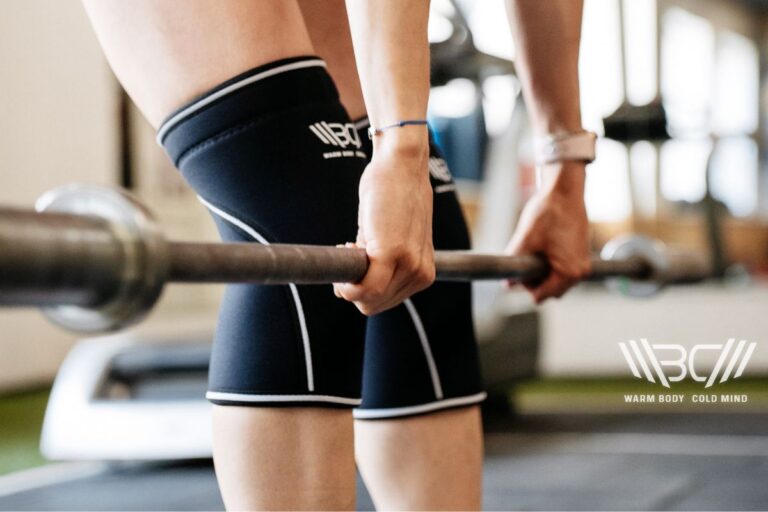When to Start Using a Lifting Belt? (Pro Weightlifter Explains)
Many gym-goers eventually confront the question: “When to start using a lifting belt” Therefore, the editors will consider training belts from different angles and athletes do not know about the appropriate moments to use them in the training process and believe in misconceptions that are firmly established in the sports world.
When to start using a lifting belt? – Many athletes often ponder about this question and the answer is that these belts boost your safety during intense training, including exercises like deadlifts and squats, so newcomers should build a solid training foundation and avoid heavy weights initially.
It seems confusing, but not that complicated as far as reading advice on the Internet can completely confuse you, but this article refers to real scientific research but here the myths that are stuck in people’s heads will be cleared up, so let’s look at some good tips that people can use.
To start off on a positive note, weightlifting belts prevent injuries and improve athletic performance, and this is true, as is the truth that they can be harmful for beginners, as many experts on the Internet advise putting this tool on as early as possible, but they are wrong. While weightlifting belts are in most cases contraindicated for beginners, for professionals who lift large weights, this is necessary to prevent injuries.
This preamble should have interested you in reading further advice that is mentioned here, but anyway there are many questions, and we tried to sort them all out, so we hope that reading will bring you a lot of benefits.
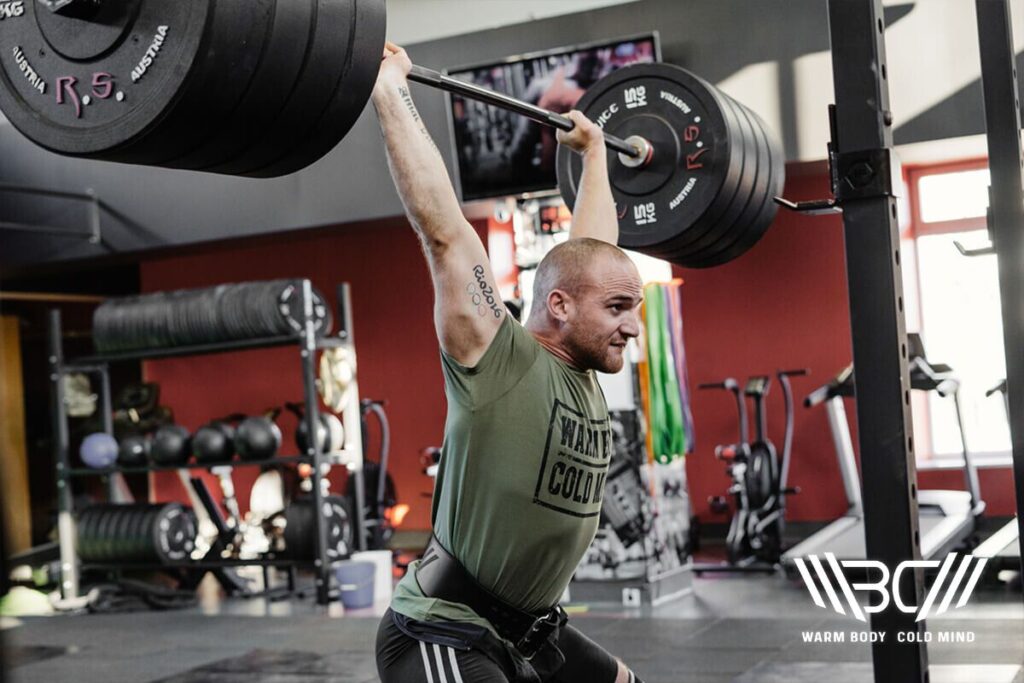
Why Do You Need a Lifting Belt?
The weightlifting belt in the training process occupies a stable niche of popularity among training athletes, and some say this is the litmus test for effectiveness, so we focus on specific data:
- We personally looked at the research that proves that the weightlifting belt regulates the functioning of the spine, as fat as athletes lean on their feet, as they should do with proper technique, and the back does not suffer, which creates a good biomechanical position for the human body, so this is the main answer to the question of when to when to wear a weightlifting belt.
- This type of belt can make it easier to recover after a workout and this unshakable fact has only recently been confirmed in the scientific community, but this was in the nature of myths that circulated in the sports world, due to the shift in the center of gravity, the muscles recover more efficiently and the body is not dispersed into different compartments of the body.
- Preventing back injuries also plays an important role in the issue faced by people who train in weightlifting, and if you decide to seriously work on your back, then you need to wear this belt and it is important to take into account the fact that if your core is not developed enough, then you will have to reconsider your desires and hopes, which will be discussed further in the text.

Enhance your strength training with Warm Body Cold Mind leather weightlifting belt providing exceptional support and durability.
A weightlifting belt isn’t a replacement for proper technique, so it should only be used for lifts close to your max capacity to reduce strain, so if you’re unsure about your ability to lift without the belt, don’t use it but relying too much on it can weaken your core muscles.
When to Use Lifting Belt?
You can ask a question like when does this belt come in handy during athletic training and the brief list covers the main situations where it’s useful.
1. When Lifting Heavy Weights?
People often use a weightlifting belt when lifting heavy weights, if you do exercises like squats and bench presses with loads exceeding one and a half times your body weight, a weightlifting belt can give support to your lower back.
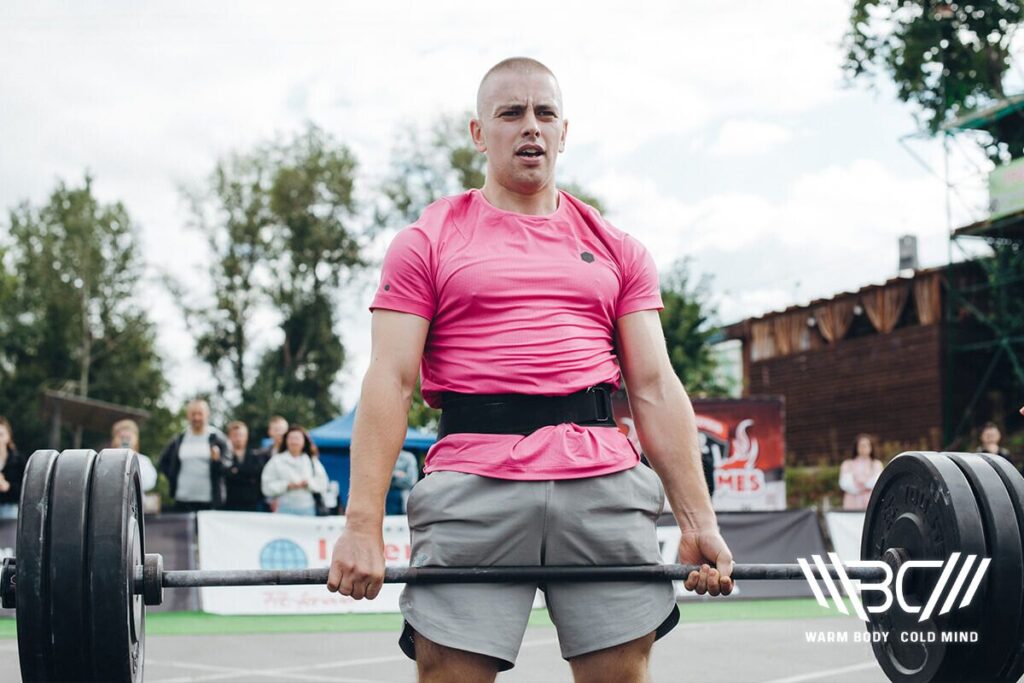
2. When Performing Certain Exercises?
Weightlifting belts are a big help when you’re doing exercises that put a lot of stress on your spine, like squats, deadlifts, overhead presses, and Olympic lifts and these exercises are essential, and the belt can make them safer, and it improves how you do these exercises and the results you get. When you have the question at what weight should I use a belt for squats, you should know that if you lift more than 70-80% of your 1 RM.
3. When Maximizing Muscle or Strength Gain?
If you want to boost your maximum strength, a weightlifting belt can be helpful, and it lets you do more reps during training sessions, going beyond what you can achieve without one.
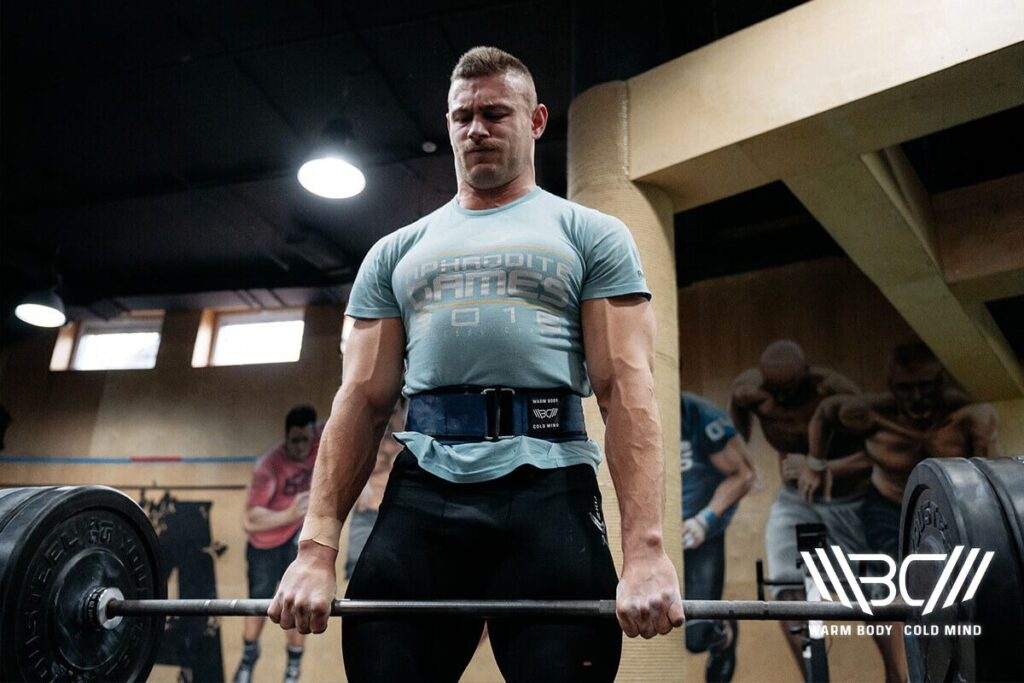
When You Don’t Need to Use Lifting Belt?
There are a few situations where wearing a weightlifting belt isn’t a good idea, and here’s a short text to help you decide. Using a belt too much can slow down the growth of your core strength over time and it’s crucial to focus on maintaining proper form, especially during basic barbell exercises.
So, constricting your movement, especially in exercises like barbell squats, can increase the chance of injury and during warm-up sets or light exercises, so if you’re in any of these situations, it’s a good idea to stop using a support belt and put your main focus on building muscle and perfecting your technique.
Subscribe!
The latest reviews of must-have home gym training equipment, apparel, and supplements that will enhance your performance and bring you new results.
What Lifting Belt Do You Need?
Lifting belts come in different types, each made for specific needs in heavy sports, and the main types are:
- Powerlifting Belts: These belts are usually 4 inches wide all around and are made to support your abs, helping you lift heavier weights and they’re often made of leather and have a buckle or lever for fastening, so powerlifting belts are used for exercises like squats and bench presses in powerlifting, so you can ask the crucial question of do you need a belt to deadlift and we will say a firm yes.
- Olympic Weightlifting Belts: These belts have a narrower front and a wider back, which gives you more freedom of movement.
- Bodybuilding Belts: These are usually made of nylon for easy adjustments and they offer moderate support.
- Strongman Belts: These belts are designed to provide maximum support, so they’re used in competitions that involve lifting heavy objects.
Most sports belts are made of leather, these belts are known for their strong support, but nylon belts are comfortable.
WBCM Leather Weightlifting Belt – Our Recommended Lifting Belt
Among the category of leather professional belts, our particular Warm Body Cold Mind, belt crafted under Oleksiy Torokhtiy’s expert guidance, is an exceptional 4-inch leather weightlifting belt epitomizes durability, so constructed from premium dual-layered leather and reinforced with four bolts to prevent slipping, it’s the ultimate protector for your spine during tough lifts.
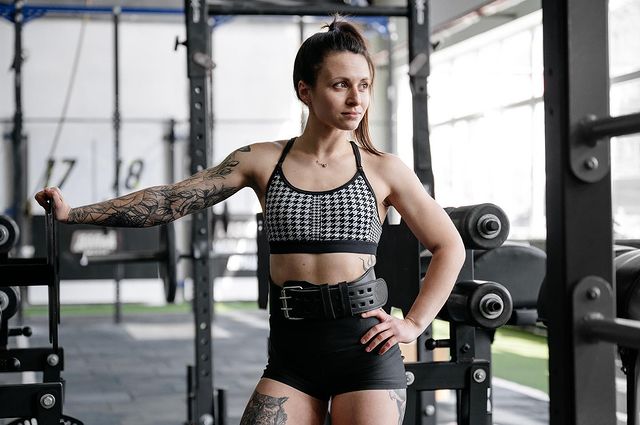
Notably, it boosts lifting capacity by an impressive 10%, as endorsed by professionals in bodybuilding, powerlifting, cross-training, Olympic weightlifting, fitness, deadlifting, and squatting, it holds the prestigious approval of IPF and USAPL and designed for both male and female athletes, it’s universally suitable.
How to Wear a Weightlifting Belt?
Once we have dealt with the question of what does a weight lifting belt do, we must move on to the rules of wearing it, so thoroughly understand how to properly wear and use it and this knowledge is essential if you want to perform exercises with precision.
1. Choose the Right Belt
You need to pick the right weightlifting belt and leather belts are recommended because they hold the shape, so the ideal belt should be about 4 inches wide all the way around to give you support.
2. Correct Positioning
Position the belt around your waist as opposed to your hips and the placement may differ depending on body structure, but it should be situated in a manner that allows for the generation of the highest degree of intra-abdominal pressure.
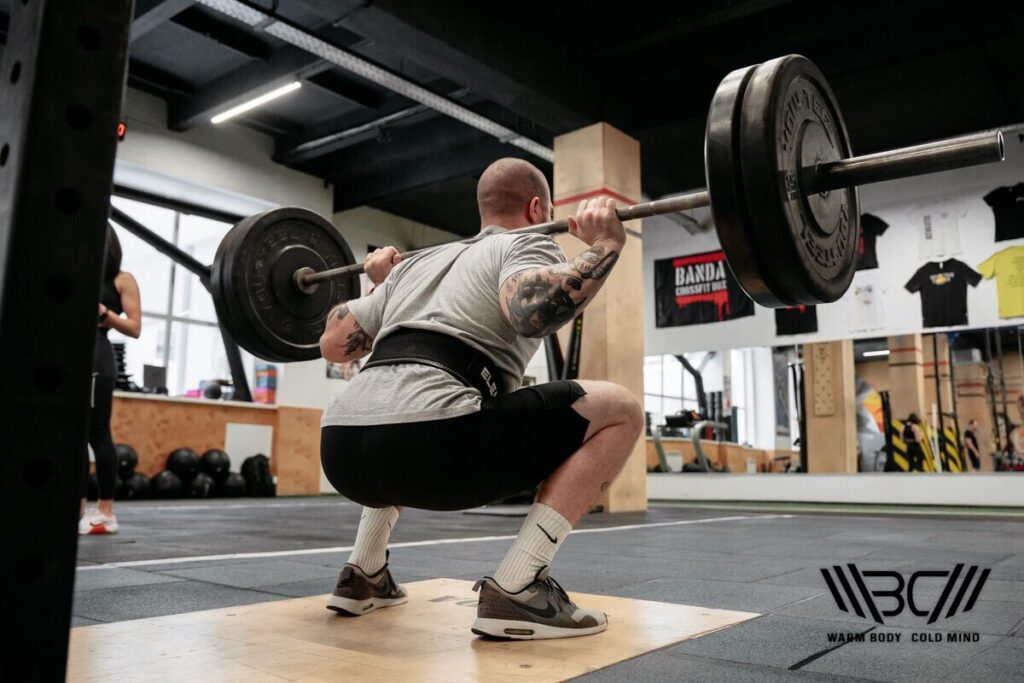
3. Tightness Level
The belt should be appropriately snug, striking a balance between firmness and comfort that allows you to breathe freely, there should be ample room to insert a few fingers between the belt and your body as far as lifting belt purpose is concerned.
4. Breathing and Bracing
Take a deep breath pushing against the belt and keep this breath in (It is Valsalva maneuver, by the way), while you lift, and exhale when you reach the top.
5. When to Wear the Belt?
You don’t need to wear a weightlifting belt all the time, it’s most helpful for heavy compound exercises, when you’re lifting around 80% of your one-rep max, but if you do isolation exercises, you can skip the belt.
6. Break It In
A weightlifting belt needs some time to break in, so it might feel uncomfortable, but with regular use it adapts to your body’s shape.
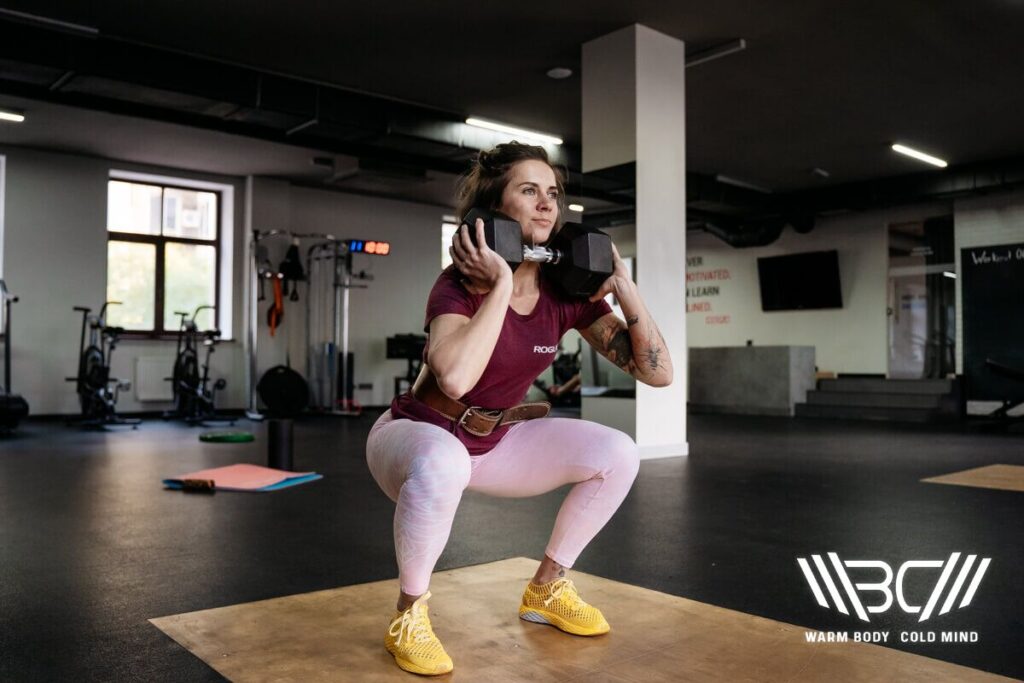
7. Don’t Rely Solely on the Belt
A weightlifting belt is a tool, so its main purpose is to help you lift heavier weights safely, but it should never replace the proper technique, just remember don’t rely on it too much.
8. Clean and Maintain Your Belt
Similar to any other gym equipment, it is imperative to ensure the proper maintenance of your weightlifting belt, after each use, it should be thoroughly wiped clean, and it should be stored in a cool, dry environment. In the case of a leather belt, the application of a suitable leather conditioner is advisable to preserve its suppleness and extend its lifespan.
9. How Tight Should My Weightlifting Belt Be?
Proper fit of the belt is more important than most athletes realize, so it should be snug enough to provide core support, but not so tight that it interferes with good training breathing. The finger should fit comfortably through your body and belt, because if this does not work, then everything is bad and you need to ease the tension. Of course, the exercise itself also affects the result of tightening the belt, but not as much as you initially think.
The weightlifting belt purpose mechanism also significantly influences its snugness and fit , as weightlifting belts come with buckle closures, lever buckles, or Velcro straps. Lever buckles offer a tighter fit, while Velcro and lever closures are easier to use.

Common Myths About Using a Weightlifting Belt
Furthermore, there exist certain myths regarding weightlifting belts that it is imperative to address.
1. Weightlifting Belts Are a Crutch That Will Stunt Your Progress and Hurt Your Core Strength
Contrary to this myth, wearing a weightlifting belt can indeed contribute to core strengthening by enhancing the capacity to generate intra-abdominal pressure, when using a weightlifting belt, the focus is not solely on core development; rather, it is primarily applied during exercises such as squats and bench presses that engage other larger muscle groups.
Even though core strengthening is not the primary objective, the correct application of the belt during these exercises can facilitate an increase in core strength.
2. You Should Only Use a Weightlifting Belt When You Are Lifting Heavy Weights
This myth prevails primarily due to the fact that many beginners are uncertain about when to use a weightlifting belt, and the decision to utilize a belt should not be based solely on the weight being lifted but rather on the intensity of the exercise in relation to one’s maximum capacity, so when performing warm-up sets or sets with a lower percentage of the maximum load, it is advisable to forego the belt and instead focus on core engagement during those belt-free sets.
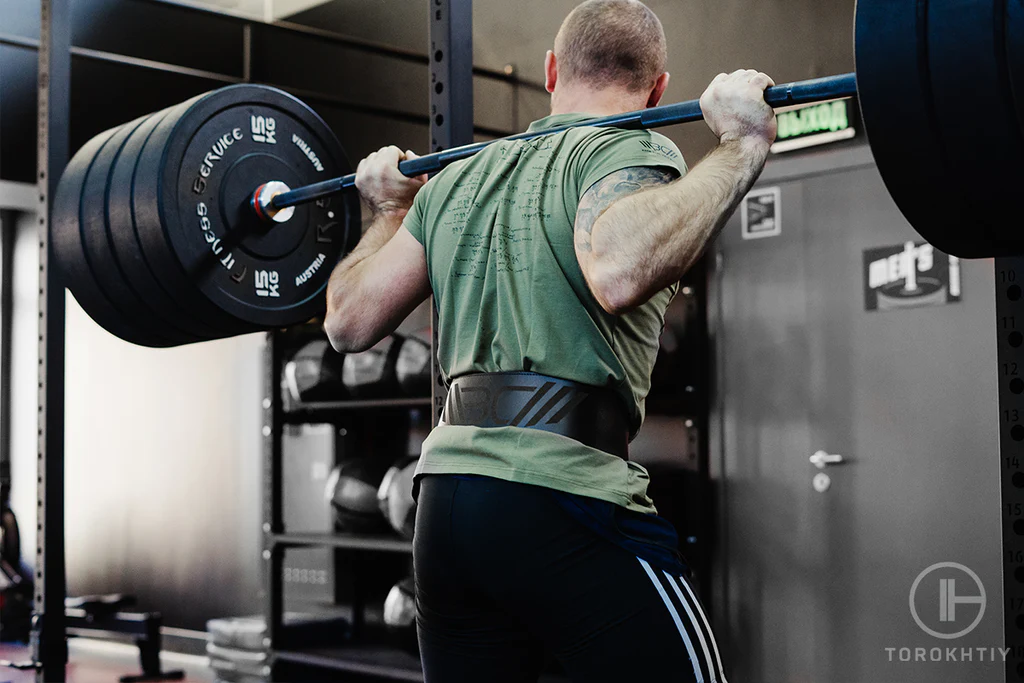
3. Weightlifting Belts Act Like a Brace to Support Your Torso So Your Core Muscles Don’t Have To
This assertion is inaccurate, so sport-specific lifting belt purpose can enhance the engagement of abdominal and lower back muscles and research has demonstrated that wearing such belts during heavy lifting either has no significant impact on the activity of back muscles or can increase it by up to 25%.
Studies on weightlifting belts have also shown a notable increase in the muscular activity of the rectus abdominis.
4. Weightlifting Belts Are Only for the Advanced Lifters
This is a misconception, because there is no such thing as a “strong enough” belt, so once you have mastered the mechanics, it is advisable to begin using it, as far as this will enable you to preemptively address any developmental plateaus that are likely to occur if you continue lifting without a belt.
5. Weightlifting belts are harmful or helpful to progress
There are many debates regarding whether weightlifting belts are harmful or beneficial for progression, so weightlifting belts are not detrimental; they serve to enhance spinal stability during heavy exercises and assist in lifting heavier weights, thus subjecting the body to greater stress and leading to increased strength.
It is crucial to remember that the use of a weightlifting belt should not substitute proper form and technique, and always prioritize the correctness of exercise execution to avoid injuries while seeking guidance from a coach or specialist on the correct usage of a weightlifting belt is advisable.
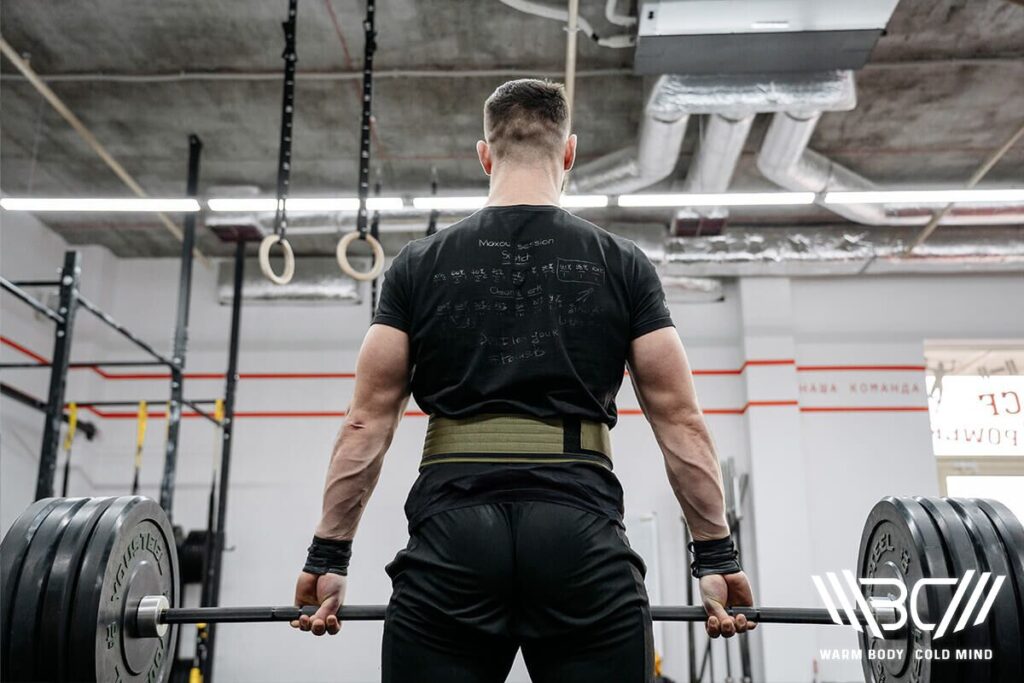
FAQ
Is It Better to Do Squats With or Without a Belt?
Obviously, you should look at your fitness level before you start using the belt at all. You can additionally ask yourself when to wear a weightlifting belt, and your answer will be correct according to your lifting experience.
In general, squats are quite a complex exercise where you need to keep your back straight and a belt can help you significantly with this, but not in the initial stages, because you first need to create the correct technique to perform this exercise.
Should I Choose a Leather Belt or Nylon?
Everything should depend solely on your preferences and future goals with which you will train and create an individual training plan. Leather belts are good enough if you work with high weights, which can tear their nylon counterparts at any time.
They are interesting in that they are used most often in bodybuilding and other aesthetic sports in order to more accurately balance between individual muscle groups.
Conclusion
Do not be swayed by skeptics or individuals attempting to debunk various myths. The utilization of a weightlifting belt can prove to be both beneficial and potentially detrimental, especially when considering beginners. Do you use the belt on a regular basis or only for heavy weights? Share your opinion in the comments below the article!
References:
- ZINK, ATTILA J.; WHITING, WILLIAM C.; VINCENT, WILLIAM J.; MCLAINE, ALICE J.. The Effects of a Weight Belt on Trunk and Leg Muscle Activity and Joint Kinematics During the Squat Exercise. Journal of Strength and Conditioning Research 15(2):p 235-240, May 2001.
- Frankel, Christopher C., and Len Kravitz. The Weight Belt Controversy, https://www.unm.edu/~lkravitz/Article%20folder/weightbelt.html. Accessed 22 October 2023.
- Faigenbaum, Avery D. EdD, CSCS1; Liatsos, Nicholar S. PT, CSCS2. The Use and Abuse of Weightlifting Belts. Strength and Conditioning 16(4):p 60-62, August 1994.
- Lander JE, Simonton RL, Giacobbe JK. The effectiveness of weight-belts during the squat exercise. Medicine and Science in Sports and Exercise. 1990 Feb;22(1):117-126.
- Bourne ND, Reilly TEffect of a weightlifting belt on spinal shrinkage.British Journal of Sports Medicine 1991
Author: Sergii Putsov
PhD in Sport Science, Olympic weightlifting, Strength & Conditioning coach and fitness expert
Sergii Putsov is a professional weightlifter with over 20 years of experience and multiple national medals. He was a member of the National weightlifting team, competing in the 94 kg weight class. Sergii holds a master’s degree in Olympic & Professional Sport Training and a Ph.D. in Sport Science. After his athletic career, Sergii transitioned into coaching and is now responsible for designing training programs, writing blog articles, providing live commentary for international weightlifting competitions, and hosting sport and fitness seminars worldwide.

